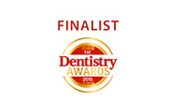Dermal Fillers Vs Anti-Wrinkle Injections
Non-surgical facial rejuvenation over the past decade has become far more safe, effective, and subtle than previous surgical options. Common names like dermal fillers and Botox find themselves appearing in magazines, on television, and even in conversation with our friends. But how much do you really understand about them and what they’re used for? Lots of people have inklings and assumptions, but you’d be surprised how many questions of yours we could answer!
So, what are the differences between dermal fillers and anti-wrinkle injections?
What are they made of?
The difference between the two treatments begins but doesn’t end with what they are both made of. They are both made from extremely different yet equally safe materials. Botox, its chemical name Botulinum Toxin A, is an FDA-approved toxin used to stop overactive muscles from contracting as noticeably. Dermal fillers, on the other hand, are commonly made of hyaluronic acid. Hyaluronic acid is a natural sugar that occurs in the body, making it incredibly safe for aesthetic treatments.
How are they used?
Now we can tackle what each treatment achieves and how it is used. Botox, amongst many medical uses, is primarily used for anti-wrinkle injections to soften fine lines and wrinkles on the face. It relaxes the muscles that cause our skin to wrinkle and crease, stopping them from contracting as aggressively and therefore presenting us with a more youthful appearance. While Botox focuses on wrinkles, dermal fillers focus on volume loss. Dermal fillers are used to add or replenish volume to areas of the face that may have lost it due to ageing. It can also be used to enhance certain areas of the face that we feel detract from our facial structure; it can volume to popular areas such as the lips and cheeks in these cases.
Where can they treat?
Another difference between anti-wrinkle injections and dermal fillers is their treatment areas. Botox treats overly expressive areas such as crow’s feet, frown lines, and forehead wrinkles. These are all areas that use muscles to convey particularly animated facial expressions like smiling, frowning, or raising your eyebrows. Botox tends to mostly focus on the upper face, whereas dermal fillers focus mainly on the mid-to-lower. This is because when we lose volume our loosened skin tends to be pulled down with gravity and forms unwanted flats and folds. This makes them popular treatments for areas such as the cheeks, tear troughs, and lips.
How long do they last?
Another difference between the two treatments is how long they both last. Typically you can expect your dermal filler results to last between 6 and 12 months, though this can vary depending on the type of filler being used, the amount being used and where it is injected. Anti-wrinkle injection results will usually last up to 6 months before needing a top-up.
What are the benefits of each treatment?
We can experience different indications that signify the benefit of receiving these treatments. One of the main indications that Botox could be necessary is wrinkles during expression or ‘static lines’, which means these wrinkles are present even when we are not expressing ourselves. Dermal fillers could benefit you if you are seeing pockets of fallen skin or unwanted hollows that indicate volume loss. These occur because we begin to lose the proteins (collagen and elastin) that keep these areas firm and plump from as early as our late 20s, resulting in reduced elasticity and youthfulness. The hyaluronic acid of the dermal fillers mimics the properties of these proteins but is also safe to use in the body, ensuring effective treatment.
The world of facial aesthetics is expanding by the year, with new treatments and possibilities becoming available every day. We’re so proud at Arnold Dental Centre to be able to bring you Botox and dermal fillers in Nottingham, and our qualified injector Dr Elaine Richards would be happy to meet with you to discuss your options. Get in touch today on 0115 9200571 or enquire online about your initial consultation.








